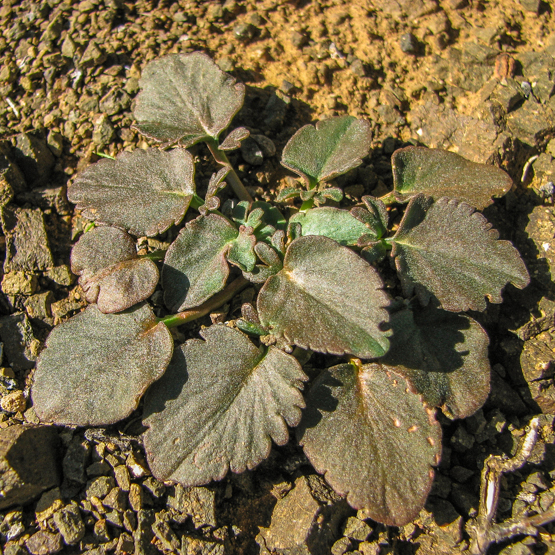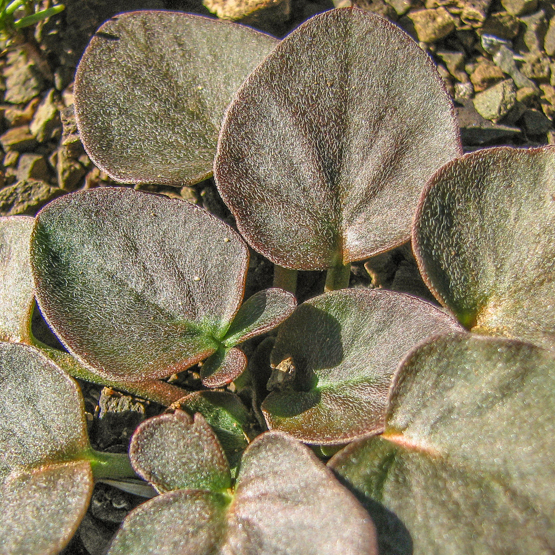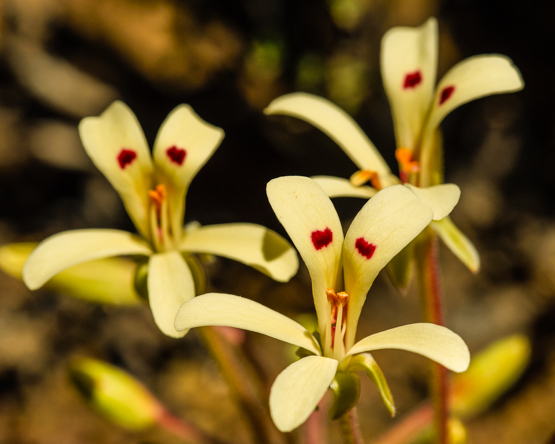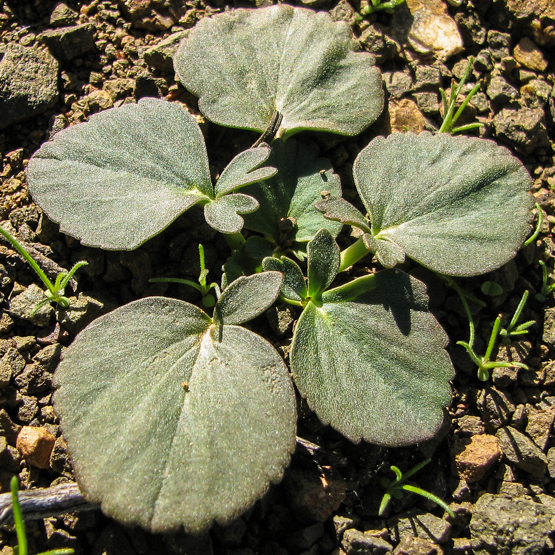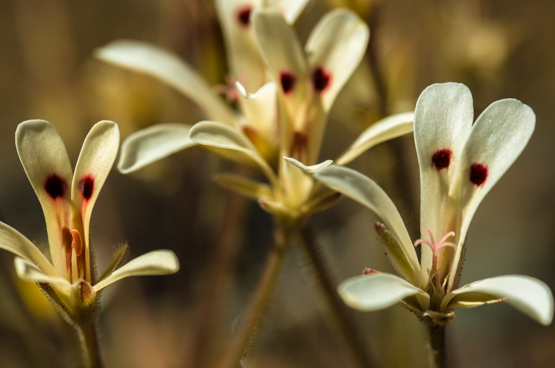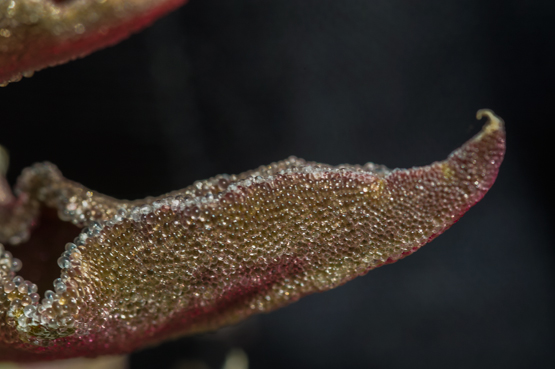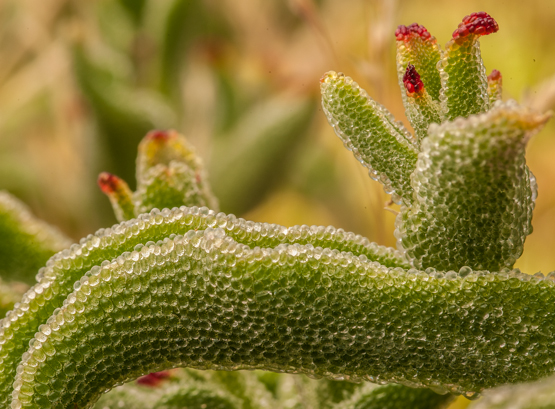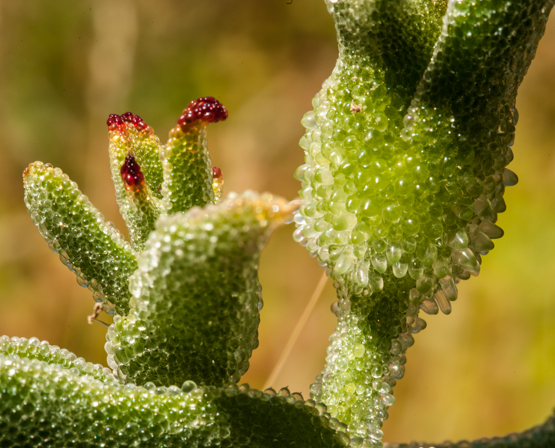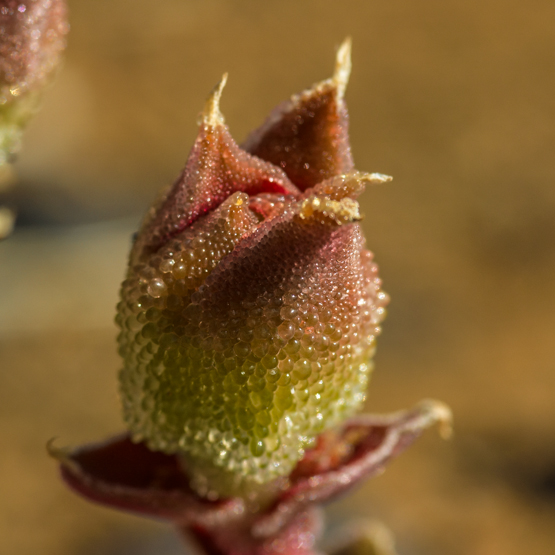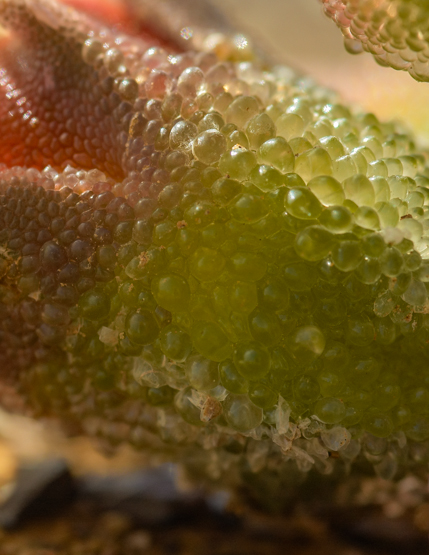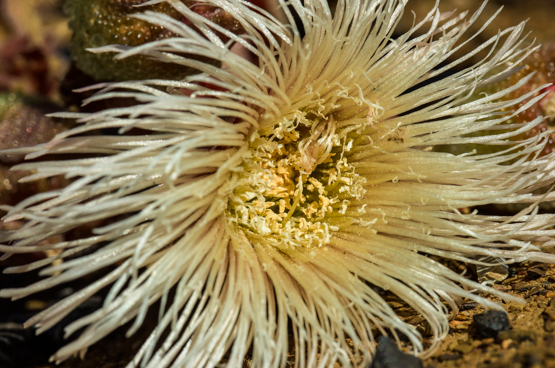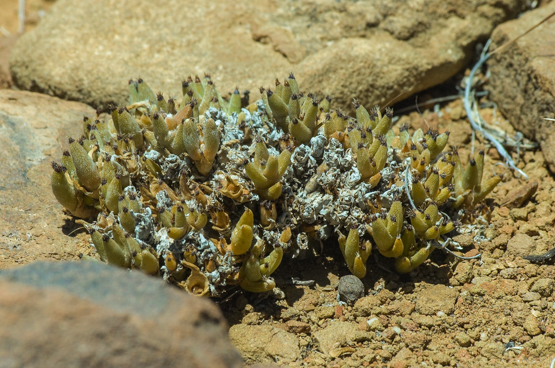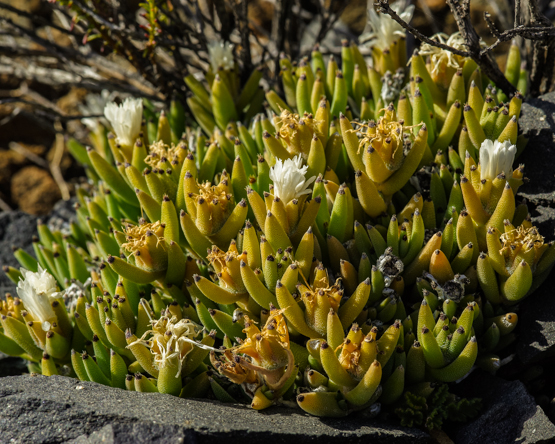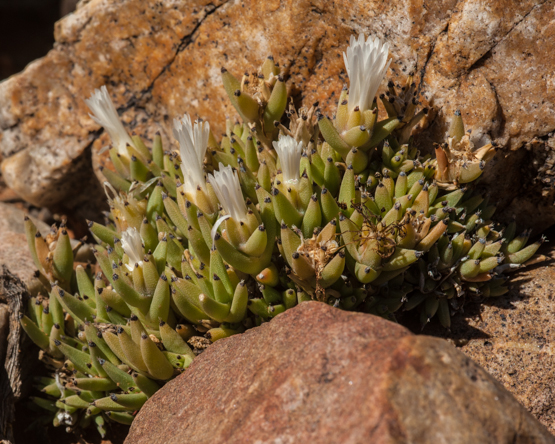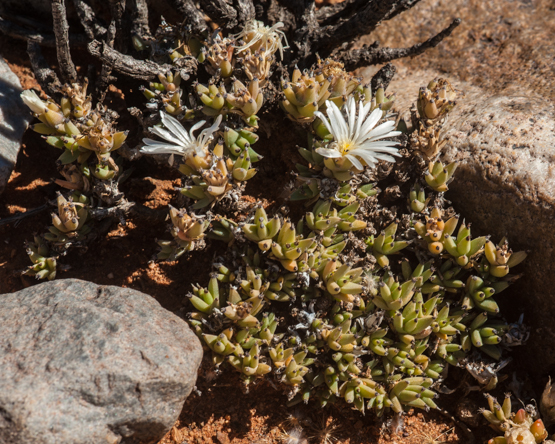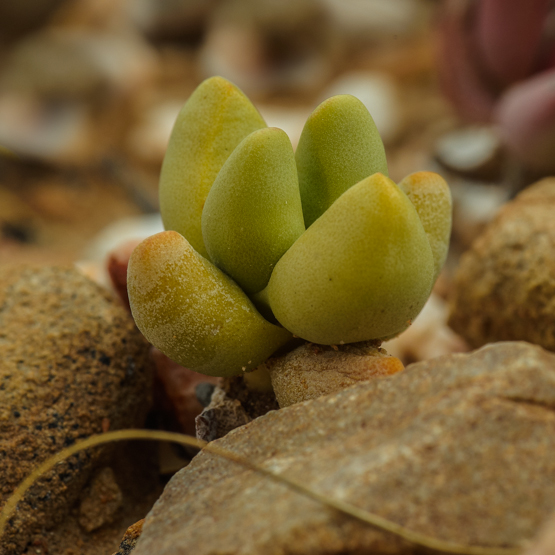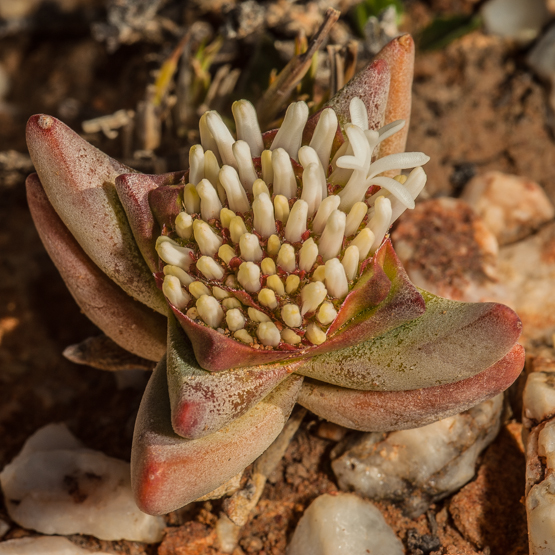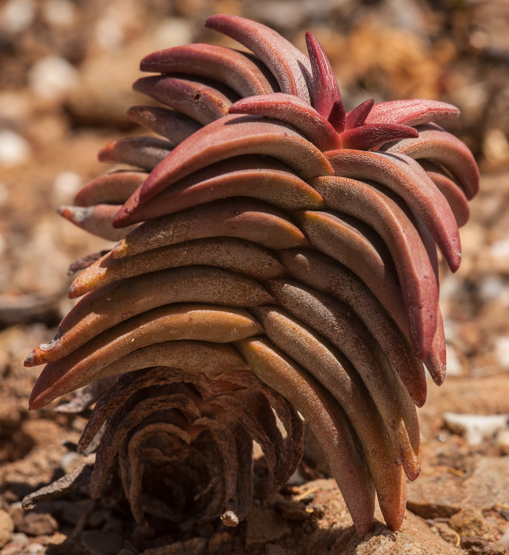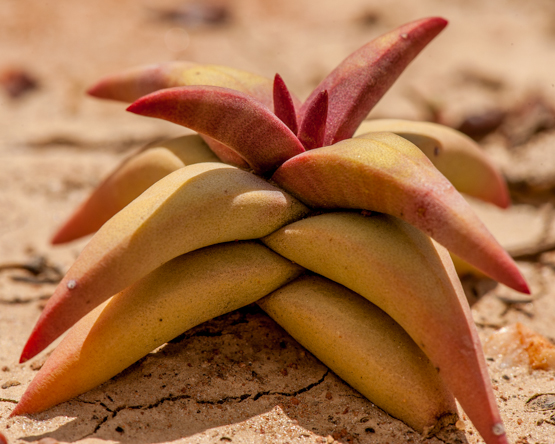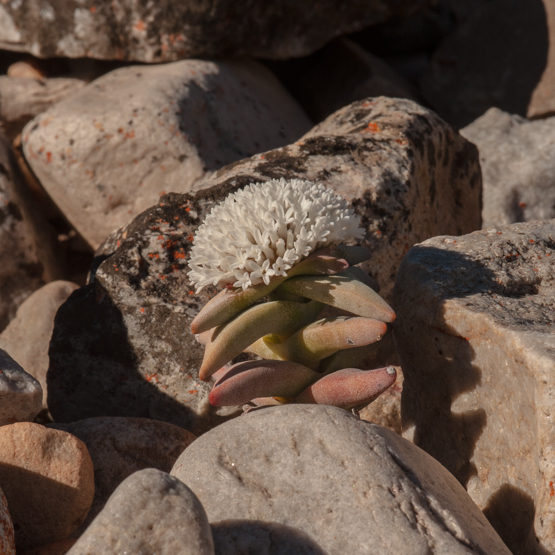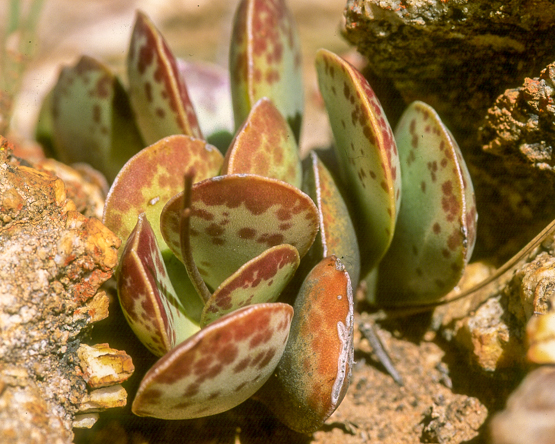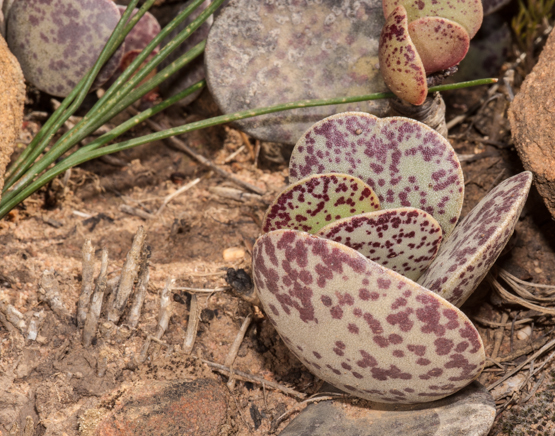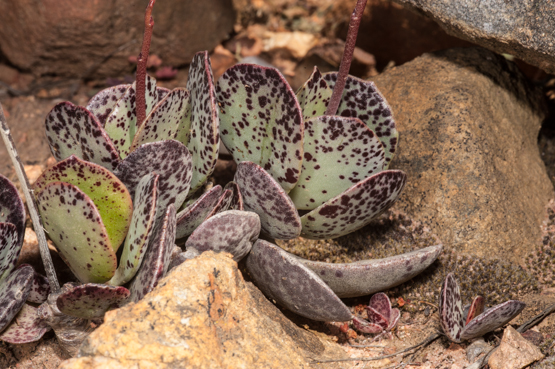Month: October 2014
Pelargonium nervifolium (1)
Apparently not all experts agree on what is a succulent and what is not. The subject of this post e.g. is mentioned in the List of Southern African Succulent Plants (1997), but not in the Illustrated Handbook of Succulent Plants (2002).
Well, whether a succulent or not, it is an interesting tuberous geophyte ( a plant that has its regenerating buds below soil-level, often with big underground storage organs and short-lived growth above ground).
The leaves are undivided or divided into 3 leaflets.
In September-October the plants are decorated with white to pale yellow flowers about 1.7 cm across – up to 17 in each inflorescence.
The plants are widespread in the winter rainfall area of the western Karoo, southwards to Karoopoort and Matjiesfontein, usually on low shale ridges in direct sunlight and often in large numbers.
Mesembryanthemum guerichianum (2)
The big bladder cells that cover leaves and calyxes give the impression of beautiful jewellery, but their reason for being there is rather more prosaic. They function as external water storage for the plants (see post 17 Dec. 2012).
Mesembryanthemum guerichianum (1)
Trichodiadema mirabile
The genus name is derived from Greek trix = hair and diadema = crown. This refers to the tuft of stiff hairs or bristles present on the tips of leaves and sepals.
The diadem is believed to be able to absorb dew and rain water. This idea is supported by the fact that in cultivation, where there is usually much more water available to the plants, the diadem is often not well developed.
The crown of hairs can be removed as a whole and is the most characteristic property of the genus. In spite of this, diadems are not present in all species, nor do they all look the same. In most cases the diadem consists of radiating hairs, but in a few species the diadem is a tuft of erect bristles. T. mirabile is a case in point.
The species forms an erect shrublet up to 8 cm tall. The beautiful, pure white flowers are up to 4 cm in diameter and appear from October to January.
The plants can be found on stony slopes from the Laingsburg area to Uitenhage.
Crassula congesta (2)
In his revision of the genus Crassula (see yesterday’s post), Toelken makes the following remark with regard to the 2 subspecies: “…it is significant that each one can be identified without hesitation. No plants with intermediate characters have been recorded..”
To my mind, there is little doubt that the next picture shows ssp. congesta.
But the plants in the next two ones look like intermediate forms to me.
The last picture was taken just south of Calitzdorp and shows what I think is a hybrid between Crassula congesta ssp. laticephala (which was not found on this particular spot, but does occur in the general area) and C. columnaris (which was growing close by).
Crassula congesta (1)
In 1985, Volume 14 of the Flora of southern Africa was published, in which H. R. Toelken dealt with the familie Crassulaceae. His description of Crassula congesta starts with the word “Biennials”. In other words, plants that germinate and grow in the first year, and flower and set seeds in the second year, after which they die.
So far so good, but … A couple of years before (1977), “A revision of the genus Crassula in southern Africa” by the same botanist had been published by the Bolus Herbarium. In this publication it is stated that:
“These plants are described as biennials but this is true only under favourable conditions. In the field, the plants often become much older before they flower but usually the whole plant dies after flowering. The plants are usually monocarpic * but regeneration after flowering may sometimes occur, but usually only when the plant has been injured and/or if the terminal inflorescence was cut of”.
* A monocarpic plant flowers only once and then dies after the seeds have ripened.
There are two subspecies:
ssp. congesta, which has leaves that are curved upwards and is found North and Northeast of the Witteberge and
ssp. laticephala, with the leaves curved downwards and occurring Southeast of that mountain range, as far East as Oudtshoorn.
In this post only pictures of the latter subspecies are shown.
Adromischus maculatus
In spite of its name, the green to greyish-brown leaves in this species are not always spotted.
The plants are found on high sandstone slopes and outcrops in the Langeberg Mountains, from the Worcester area to north of George and along the Swartberg Mountains from Prince Albert to around Uniondale as well as near Beaufort West.
The horny margin that runs all around the leaf is a useful character to distinguish the species from similar ones, esp. A. triflorus.
